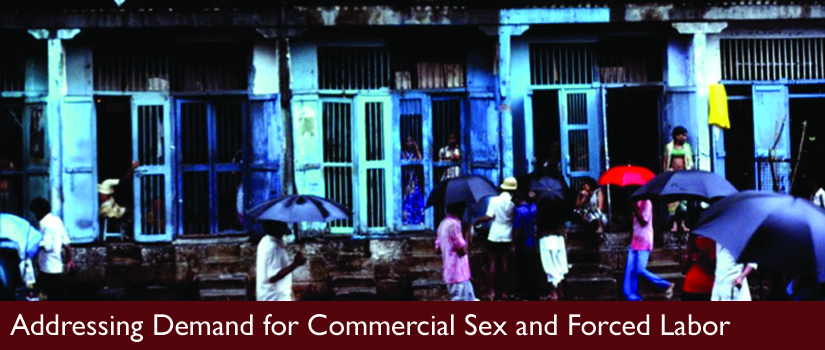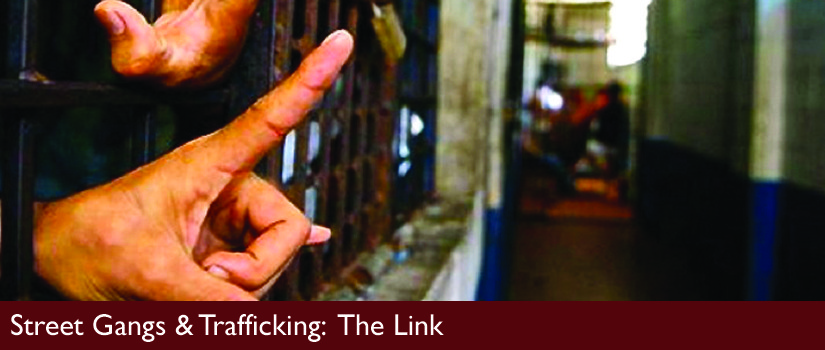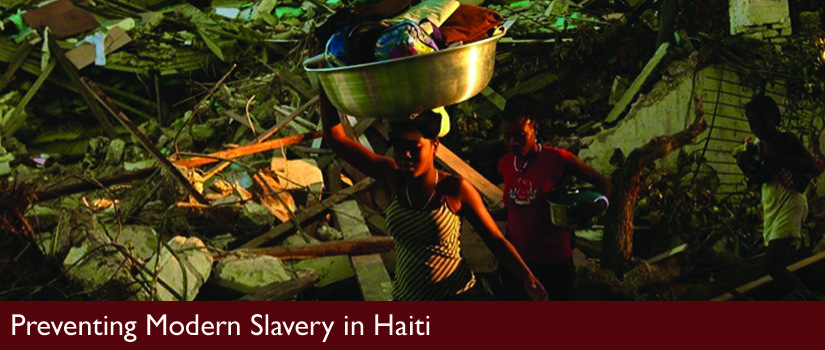Federal Strategic Action Plan for Services to Victims of Human Trafficking
May 16, 2013Comments are closed.
>> Full Toolkit:Strategy_Action_Plan_toolkit_5-10-13_Final
>> Original Letter:Strategic_Plan_of_Action_letter may 13 2013 2-1
________________________
President Obama
The White House
Washington, DC
May 16, 2013
Re: Federal Strategic Action Plan for Services to Victims of Human Trafficking
Dear President Obama:
We write to you on behalf of organizations from across the United States and worldwide working to end sex trafficking and the exploitation of women and girls in prostitution to express our concerns regarding the Federal Strategic Plan of Action for Services to Survivors of Human Trafficking. While we appreciate the significant commitments your administration has made to combat human trafficking, we want to emphasize four areas that the current plan does not effectively address: 1) demand for prostitution that fuels sex trafficking; 2) provision of services to adult victims of sex trafficking; 3) implementation of existing U.S. laws, regulations and policies; and, 4) inclusion of survivor-led organizations in the planning, implementation and evaluation of programs.
Many of our organizations are led by trafficking survivors who know first-hand the human rights violations inherent in sex trafficking and exploitation. Others have spent years working domestically and internationally against the sexual exploitation of women and girls and bring substantial expertise and experience to this field. We offer the following observations in the spirit of collaboration in the fight against human trafficking:
1. Prevention: targeting the demand for prostitution that fuels sex trafficking.
This administration has committed to preventingtrafficking by raising awareness among vulnerable populations, leading by example, and educating the public and first responders.[1]
The elimination of sex trafficking is fundamentally linked to targeting the demand for prostitution. Any effort to prevent sex trafficking must focus on the sex buyers and facilitators.
A recent report prepared for the National Institute of Justice states that [t]he illicit markets of prostitution and sex trafficking are, like any other markets, driven by demand. Wherever demand occurs, supply and distribution emerge. It is indisputable that removing or reducing demand reduces or eliminates markets. The need for people to provide a supply and for pimps and traffickers to distribute the supply to buyers would not exist without demand.[2] Therefore, without buyers of commercial sex, sex trafficking would not exist.
Your administration should encourage a focus on demand through the federal governments law enforcement offices. First, all law enforcement and Department of Justice training and technical assistance programs and materials should emphasize anti-patronizing measures, alongside prostitution prevention and diversion programs for those at risk. The existence and range of sex businesses, including on-line businesses, within a jurisdiction should also be documented because the level of prostitution activity in a jurisdiction is a better indicator of organized crime and trafficking activity than the data currently being put forward as trafficking statistics.
Second, training curricula should raise awareness and build the capacity of educators, businesses, the hospitality, tourism and transportation industries, health care providers and faith-based groups to look for and better identify sex buyers and those who facilitate demand, including from among these groups, and how to effectively bolster the efforts of law enforcement.
Third, law enforcement should focus investigation and arrest efforts toward sex-buyers and facilitators, including Internet Service Providers, that fuel the commercial sex industry and away from those who are prostituted. At the local level, many jurisdictions are adopting this approach as a more effective way to prevent sex trafficking. We note the precedent set by the 8th Circuit Court of Appeals in its January 7, 2013 decision where, agreeing with the Department of Justice, it stated the Trafficking Victims Protection Act (TVPA) applies to buyers of commercial sex as direct parties to sex trafficking.[3] We request that the Department of Justice publicize this pivotal decision across the country, implement consistently enforced sentencing policies and encourage jurisdictions to reorient resources, training and technical assistance toward primary prevention, targeting not only the supply of, but also the demand for, commercial sex.
2. Protecting survivors: providing services to adult victims of sex trafficking
This administration has committed to protectingsurvivors through comprehensive social services, family reintegration, and immigration services. [4]
The majority of protection efforts have focused on child victims of sex trafficking. Many of these child victims remain in the sex industry into adulthood their victimization neither ceasing nor lessening, contributing to the many sex trafficking victims over the age of 18 who need access to services. While we must address the needs of child victims of human trafficking and its prevention, this should be in addition to, not instead of, services to adult victims.
Your administration can address this issue by encouraging the federal government to provide more funding for establishing and staffing facilities that provide comprehensive services for all victims of human trafficking. The barriers for adult victims should be removed and access to shelters and centers improved.
With respect to protection, cooperation with law enforcement should not be a condition for trafficking victims to receive services, nor should convictions for prostitution and/or related crimes serve as a bar to federal assistance or benefits, including housing and student loans.
3. Preventing trafficking: implementing to human trafficking laws, regulations and policies
This administration has committed to preventing human trafficking by leading by example.[5]
While we applaud the recently issued Executive Order 13627, the End Trafficking in Government Contracting Act, the National Action Plan on Women Peace and Security and the Strategic Plan of Action, we are cognizant of existing U.S. Executive Orders, regulations and laws that have not been implemented. For example, Executive Order 22, FAR 22.1073(2), 22 USC 7104(g), and UCMJ Article 134 have similar, if not identical provisions asserting zero tolerance for human trafficking and procurement of commercial sex by contractors, members of the military, and members of the foreign service. Yet, there is an abysmal record of non-existent enforcement of zero tolerance, specifically regarding procurement of commercial sex. Simply restating these requirements as priorities has no meaning without effective implementation and accountability for those who violate the law or are non-compliant with regulations. This administration must actively implement and enforce all laws, regulations and policies regarding sex trafficking and procurement of commercial sex.
Additionally, the State Department, Department of Justice and other agencies and bureaus must meet the provisions of the current and previous Trafficking Victims Protection Act reauthorizations. Departments that have not implemented the programs and/or initiatives mandated by legislation should be held accountable.
4. Maximizing outcomes: partnering with survivor-led organizations in the planning, implementation and evaluation of human trafficking programs.
This Administration has committed to partnering with civil society, state and local government, the private sector, and faith-based organizations to maximize resources and outcomes.[6]
We applaud the administrations commitment to partnerships. However, there is a noticeable absence of partnerships between survivor-led organizations and the U.S. government in high-level forums, stakeholder meetings and federal grants. Members of many survivor-led organizations have significant expertise in areas of prevention, including ending demand, and provision of services to victims. Federal anti-trafficking efforts should be anchored in the realities of survivor experiences by including these organizations in the design, implementation and evaluation processes, at both the federal and state levels. For this to happen, survivor-led organizations must be adequately funded and equally represented in the awards of federal anti-trafficking grants.
We welcome the opportunity to further discuss these concerns and to engage with the Presidents Inter-Agency Task Force to Monitor and Combat Human Trafficking.
Thank you for your attention and we look forward to hearing from you. Please reach out to Lauren Hersh at (212) 586-0906 or lhersh@equalitynow.org.
cc: Department of Homeland Security
Department of Justice
Department of Health and Human Services
Office to Monitor and Combat Trafficking in Persons
[1] White House Press Release: The Obama Administration Record on Human Trafficking April, 9, 2012, available at http://www.whitehouse.gov/the-press-office/2013/04/09/obama-administration-s-record-human-trafficking-issues
[2] Michael Shively, Ph.D., Kristina Kliorys, Kristin Wheeler, Dana Hunt, Ph.D., A National Overview of Prostitution and Sex Trafficking Demand Reduction Efforts, Final Report, prepared for the National Institute of Justice, page iv (2012) www.ncjrs.gov/pdffiles1/nij/grants/238796.pdf
[3]22 USC 7102 defines sex traffickingas the recruitment, harboring, transportation, provision, or obtaining of a person for the purposes of a commercial sex act, in which the commercial sex act is induced by force, fraud, or coercion, or in which the person induced to perform such an act has not attained 18 years of age. The 8th Circuit Court of Appeals it its opinion filed Jan 7, 2013 agreed with the Department of Justice that the sex trafficking law was intended to include the actions of buyers of sex acts with adults who were caused to engage in prostitution through force, fraud or coercion, or minors. http://media.ca8.uscourts.gov/opndir/13/01/121719P.pdf
[4] White House Press Release, see footnote 1
[5] White House Press Release, see footnote 1.
[6] White House Press Release, see footnote 1.





